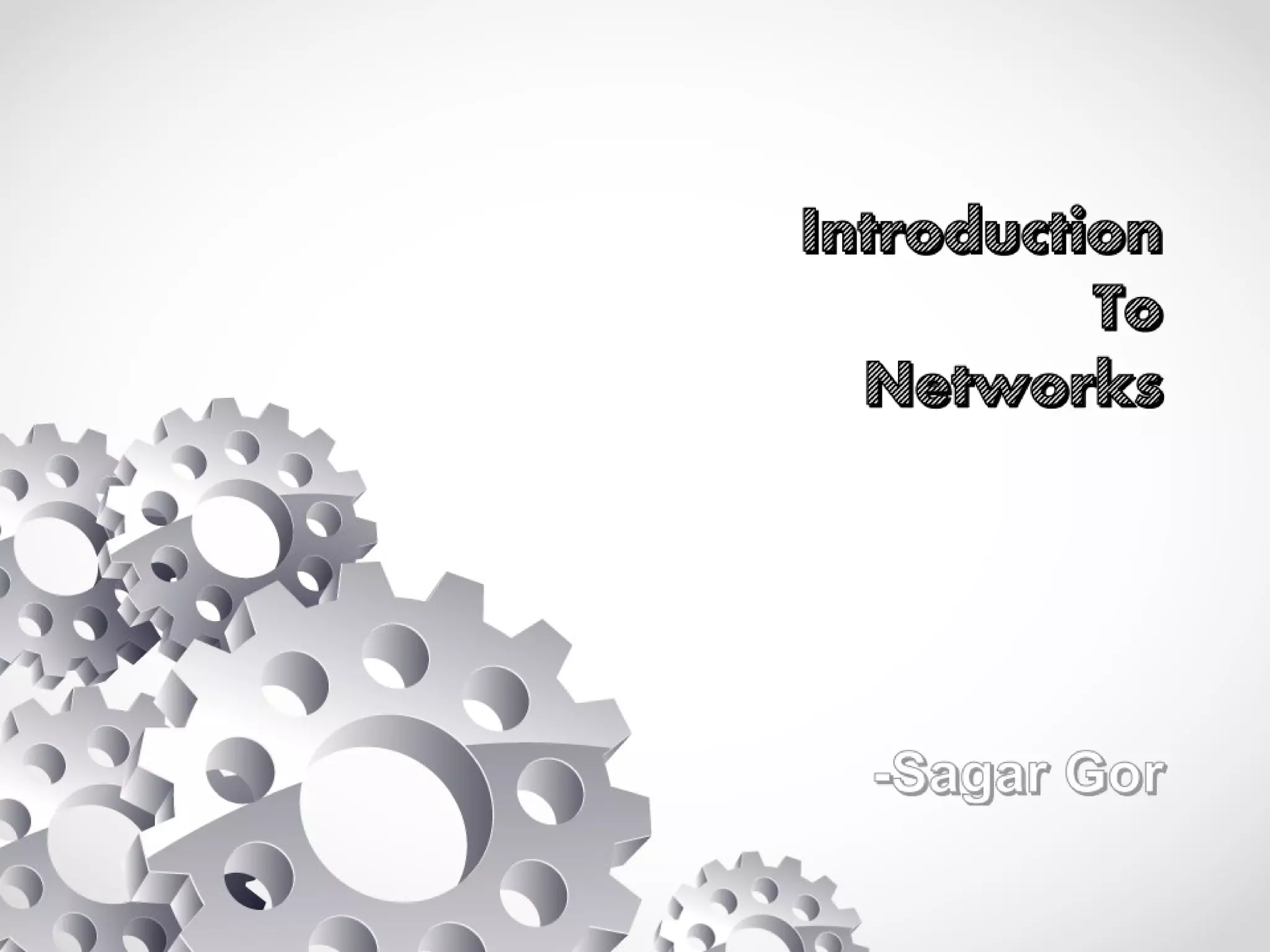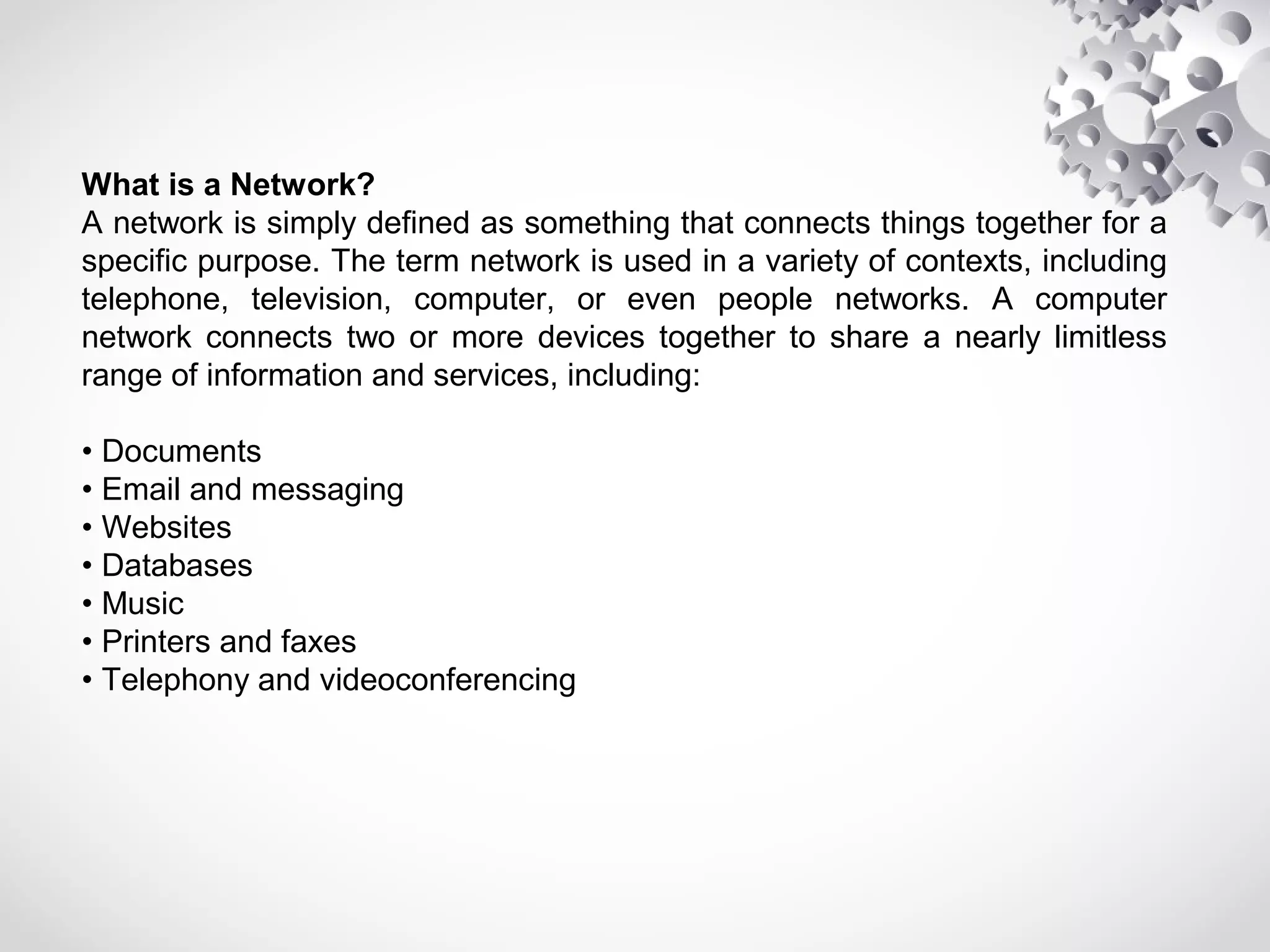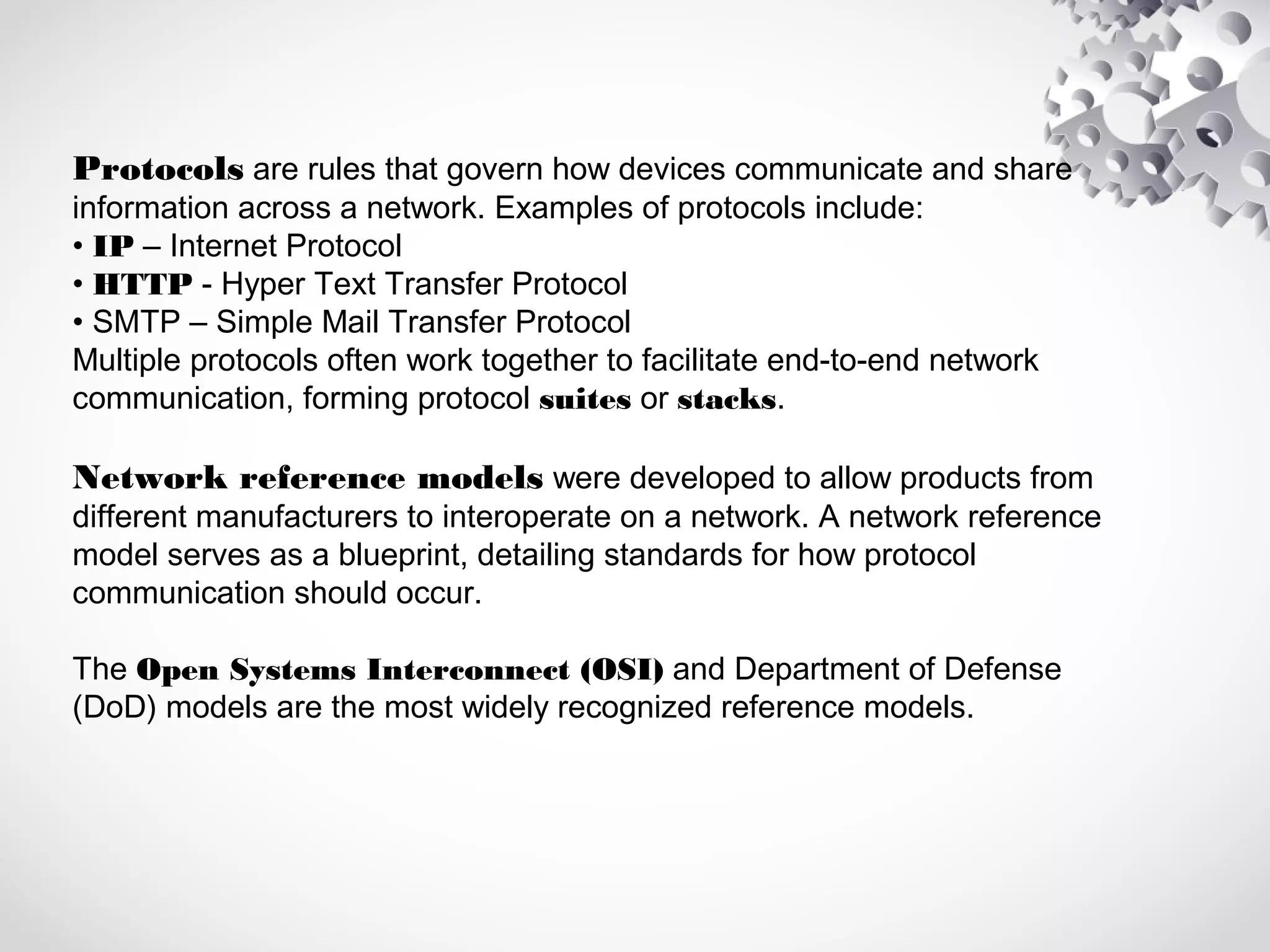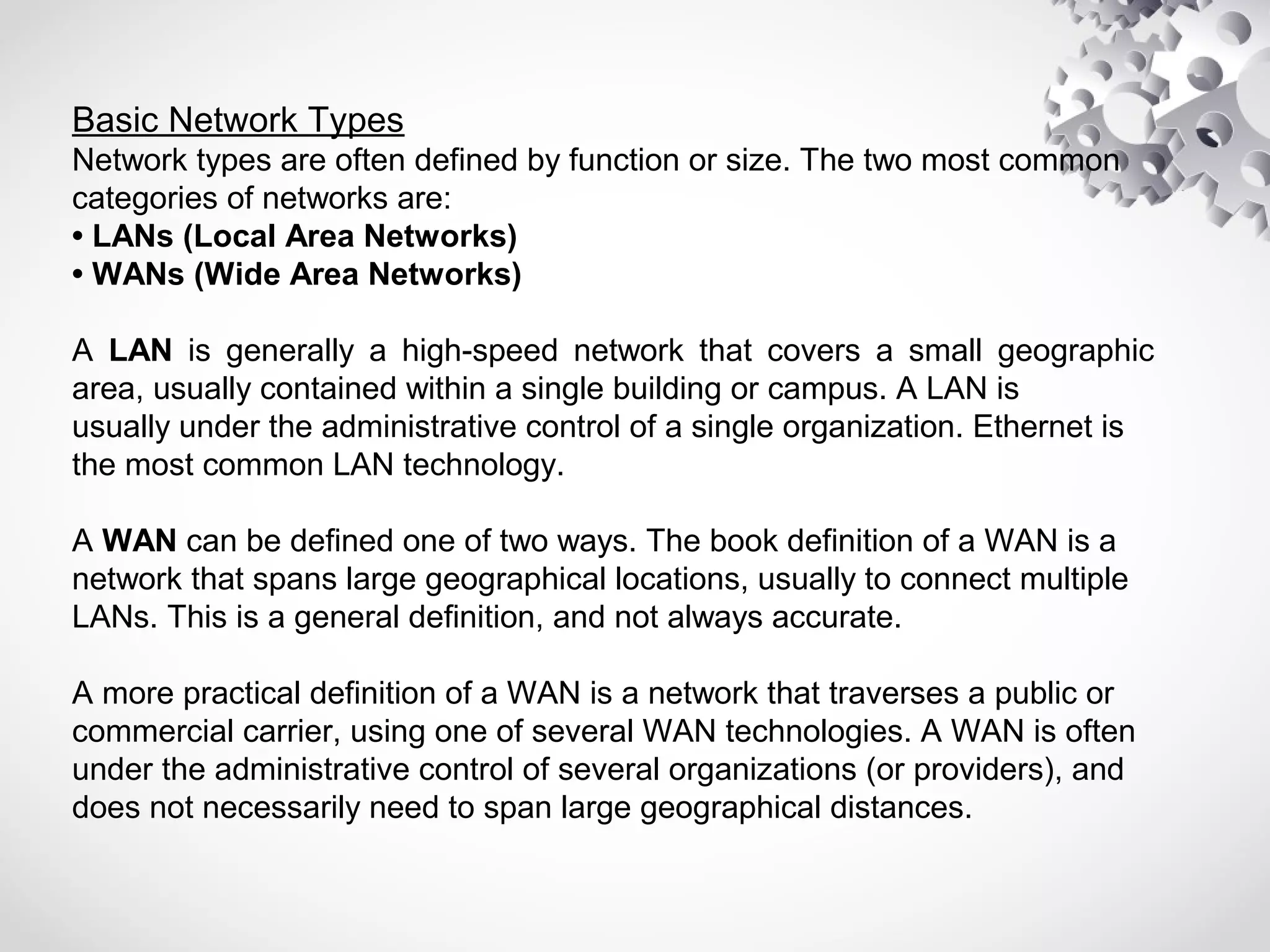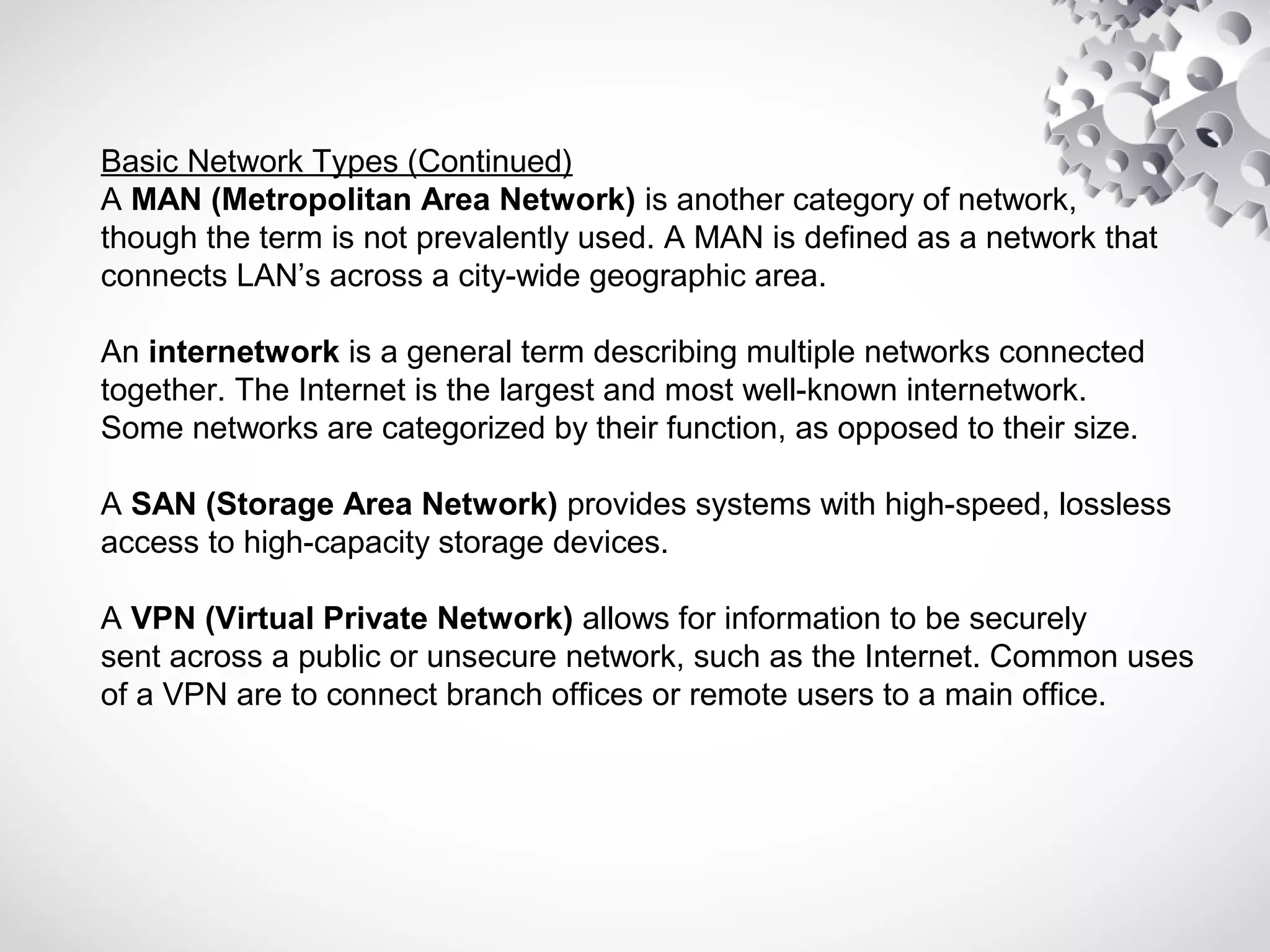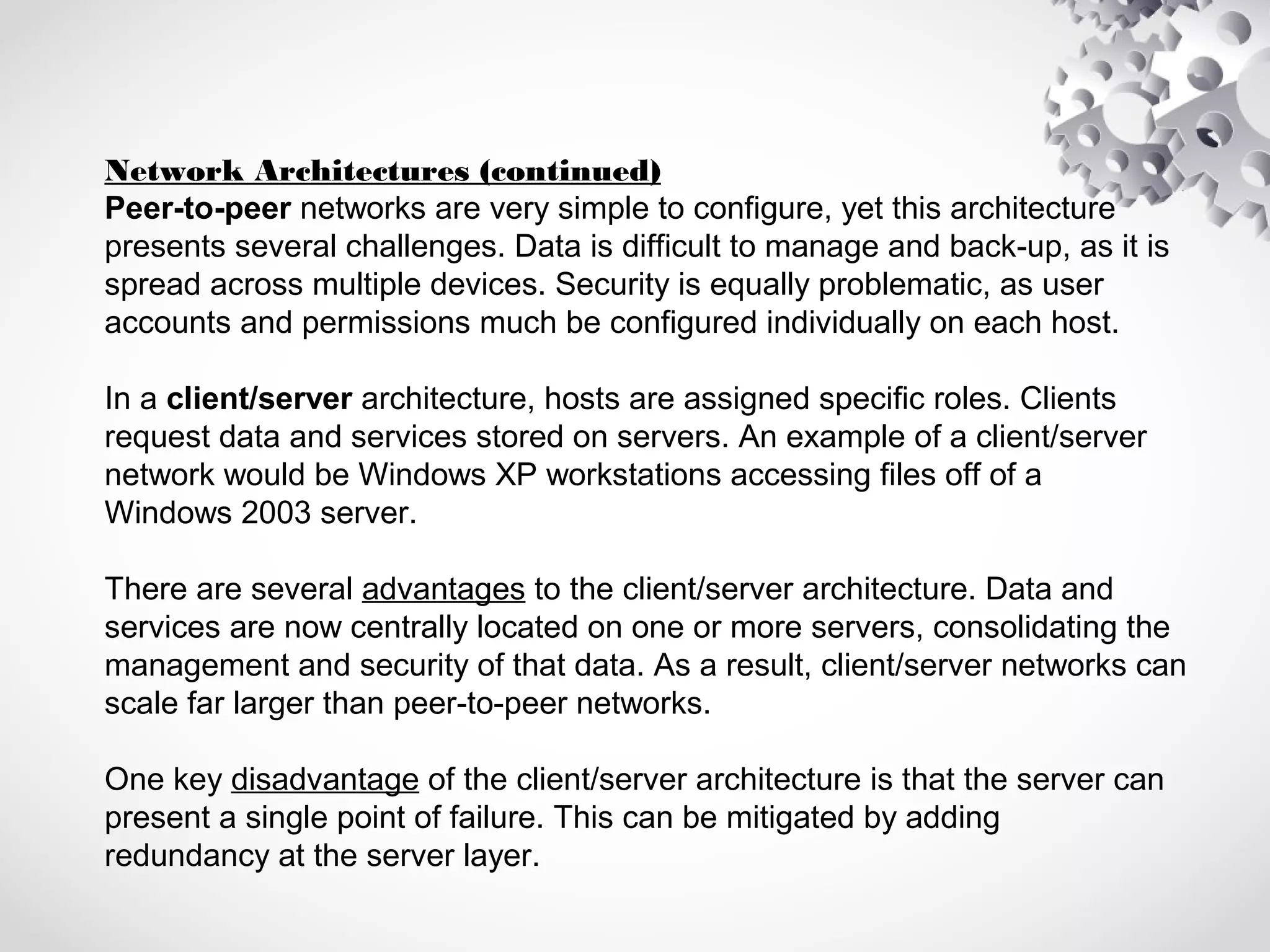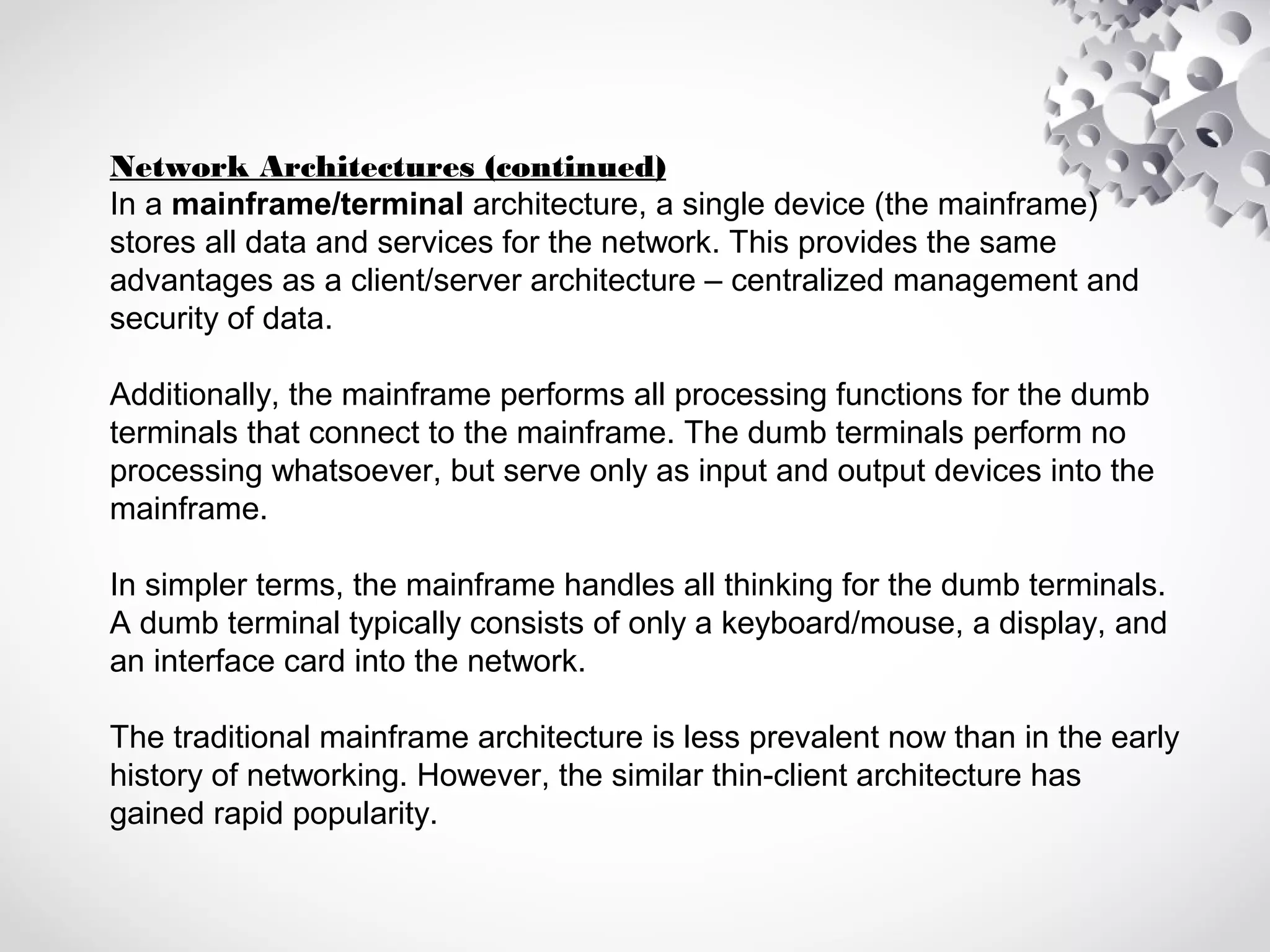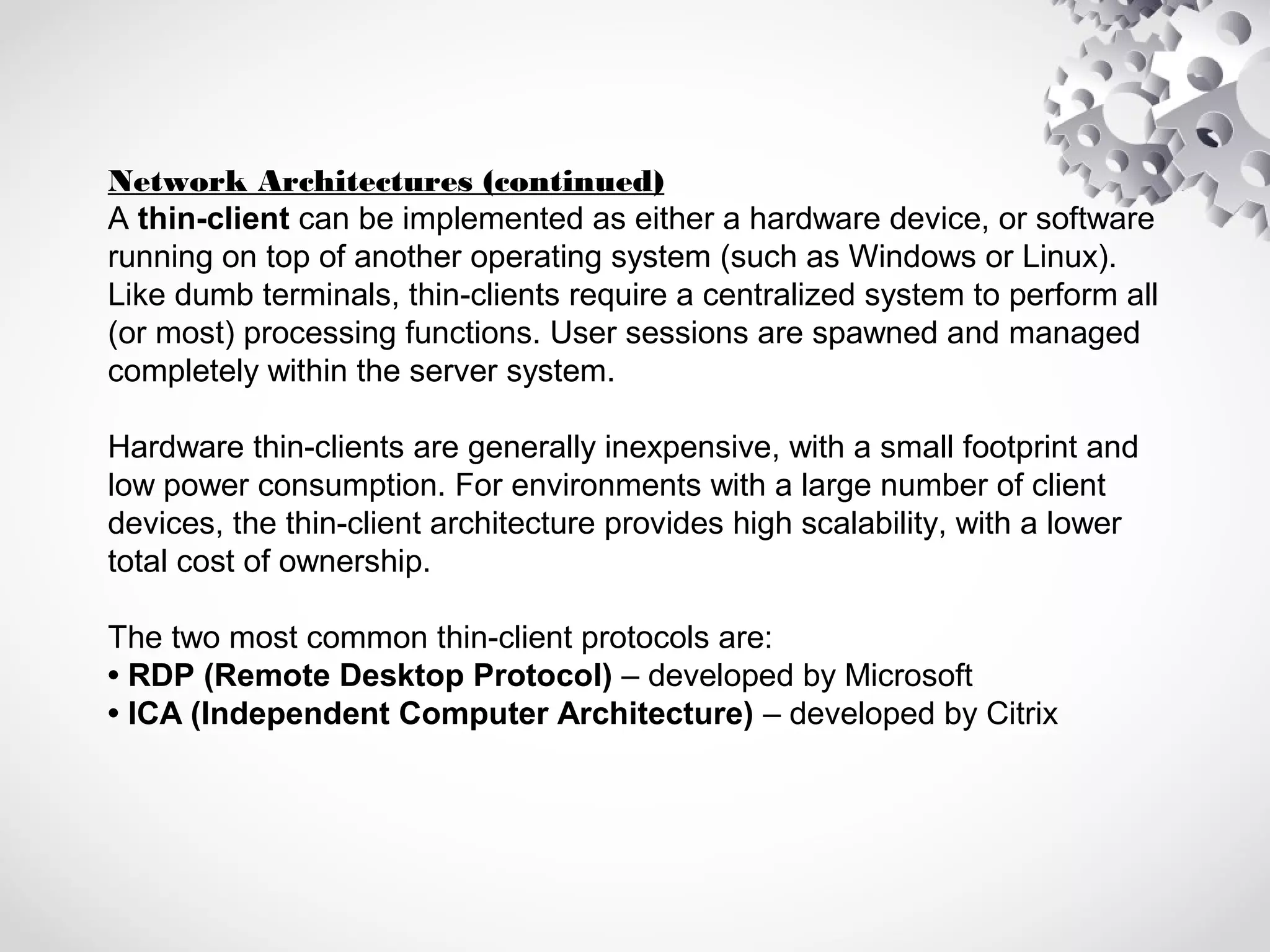A network connects devices together to share information and services. A computer network allows sharing of documents, email, websites, databases, music and other resources. Protocols like IP and HTTP facilitate communication across networks. The OSI and DoD models are reference models that provide standards for protocol communication. Networks can be local area networks (LANs) covering a small area like a building, or wide area networks (WANs) spanning large distances. Network architectures include peer-to-peer, client/server, and mainframe/terminal, with client/server being the most common today.
